
Choosing not to have a baby can happen due to many factors. Age, marital status, readiness to have a baby, the gap between subsequent children, or a wish to stay child-free- the reasons can be endless. Contraception is a great way to ensure that you don’t have to face an unplanned pregnancy and the issues that may arise with it. Different contraception methods can help you avoid pregnancy till you are ready to start or expand your family.
There are a wide variety of contraception methods to choose from. IUDs, pills, patches, and injections are some of the common contraceptive methods. In this article, we detail the various contraception methods, the intricacies of each method, and how each method helps in preventing pregnancy.
In This Article
- What is Contraception?
- List of Top 5 Contraception Methods
- Which is the Most Effective Form of Birth Control?
- Factors to Consider When Choosing Contraception Methods
- FAQ’s
What is Contraception?
Contraception is a way by which you can avoid pregnancy while still continuing to have sexual intercourse. Simply put, contraception is a way to prevent getting pregnant (1).
A contraceptive is a method or a device that helps prevent pregnancy. It can be in the form of devices, medications, or procedures. Contraceptives give couples the freedom to choose not to get pregnant and still have an active sexual life.
List of Top 5 Contraception Methods
Different types of contraception methods are available. It is vital to remember that one method of birth control may work effectively for one person but may be ineffective for another. It all depends on the age and overall health of the person using that particular method. In addition to this, the type of contraception method also depends on how long the couple wants to avoid pregnancy.
1. Long-Acting Reversible Contraception or LARC
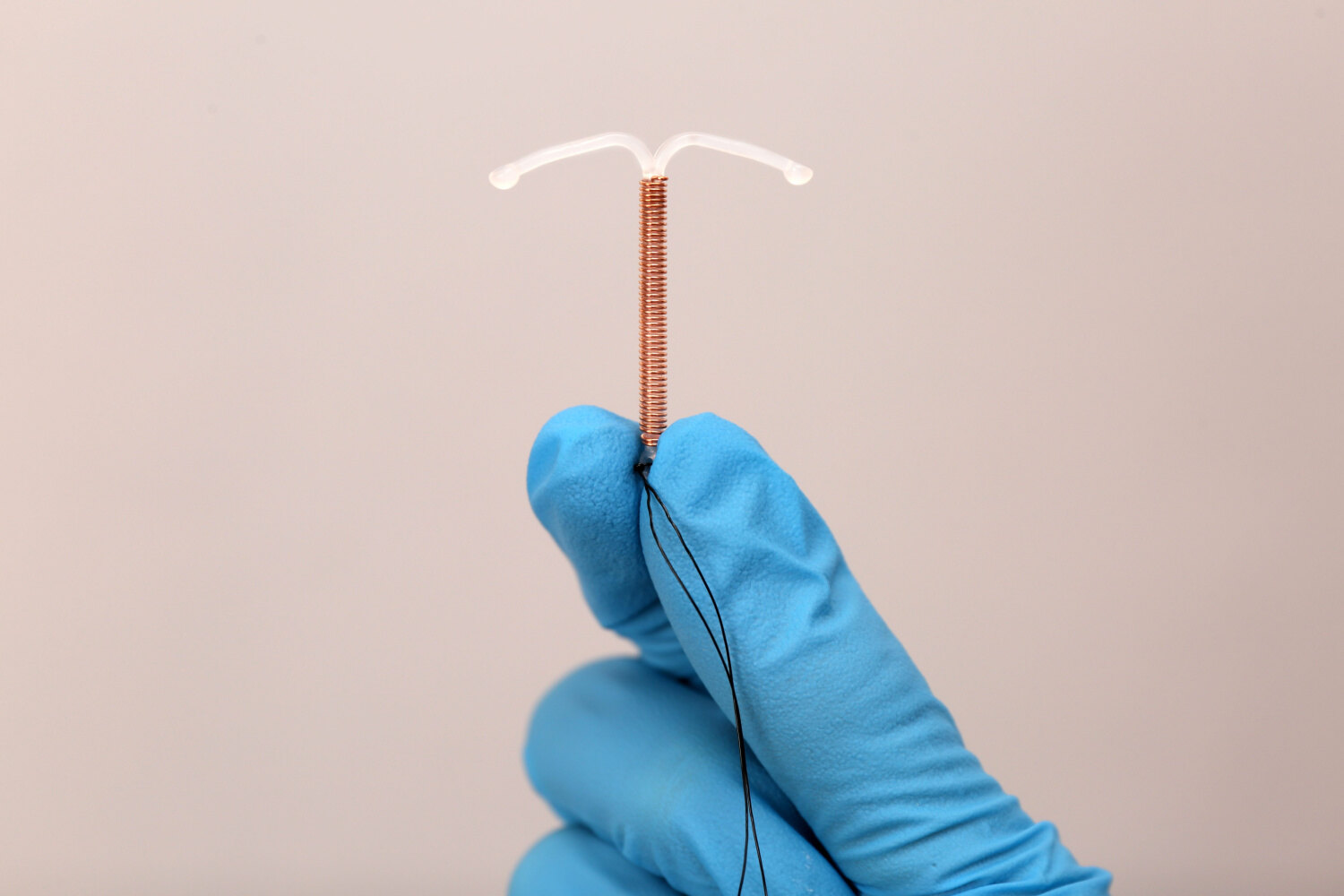
Long-acting reversible contraception, LARC, as the name suggests is a group of contraceptive methods that are long-acting or last for a long time. These methods can also be reversed, meaning that conception is possible once you stop making use of these methods. You don’t need to remember to use it every day or even every month. LARCs are considered to be the most effective form of reversible birth control. In addition, they are safe and effective for most women.
There are two types of LARC.
1.1 Intrauterine Methods on Intrauterine Devices
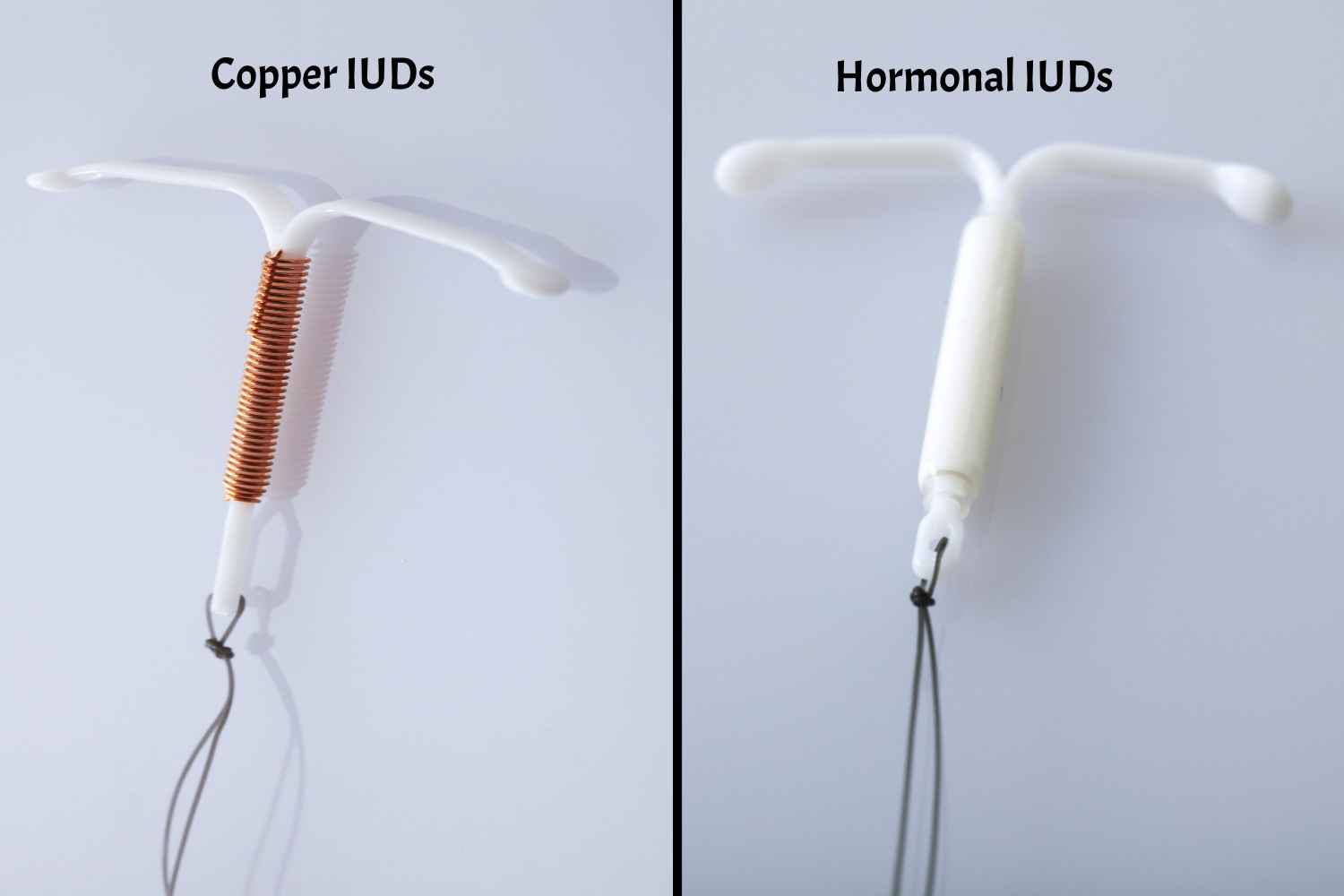
An IUD or an intrauterine device is a small T-shaped device that is placed into the uterus of a woman by a trained medical expert. These devices release copper or hormones which will help prevent pregnancy.
IUDs are considered one of the most effective contraceptive methods (2). To work effectively, these devices must be inserted the right way by a medical professional. They can work anywhere between 5 to 10 years as effective birth control methods. IUDs can be inserted at any time during the menstrual cycle. These devices are safe for breastfeeding mothers (3) and are commonly used by mothers who have just delivered a baby.
In some cases, there is a risk of possible infection post the insertion of the device. Some bodies may push out the device. In such cases, the device needs to be put back into place. Some women may also experience heavy bleeding and painful periods for up to 3 to 6 months after device insertion.
IUDs are again of two types
a) Copper IUDs: Copper IUDs are devices that release copper. Copper prevents fertilization of the egg and in cases where fertilization happens, the device prevents implantation of the fertilized egg.
b) Hormonal IUDs: Hormonal IUDs are devices that release the hormone progestin. Progestin thickens the cervical mucus and ensures that the uterine wall doesn’t thicken, this preventing fertilization and implantation.
1.2 Implants
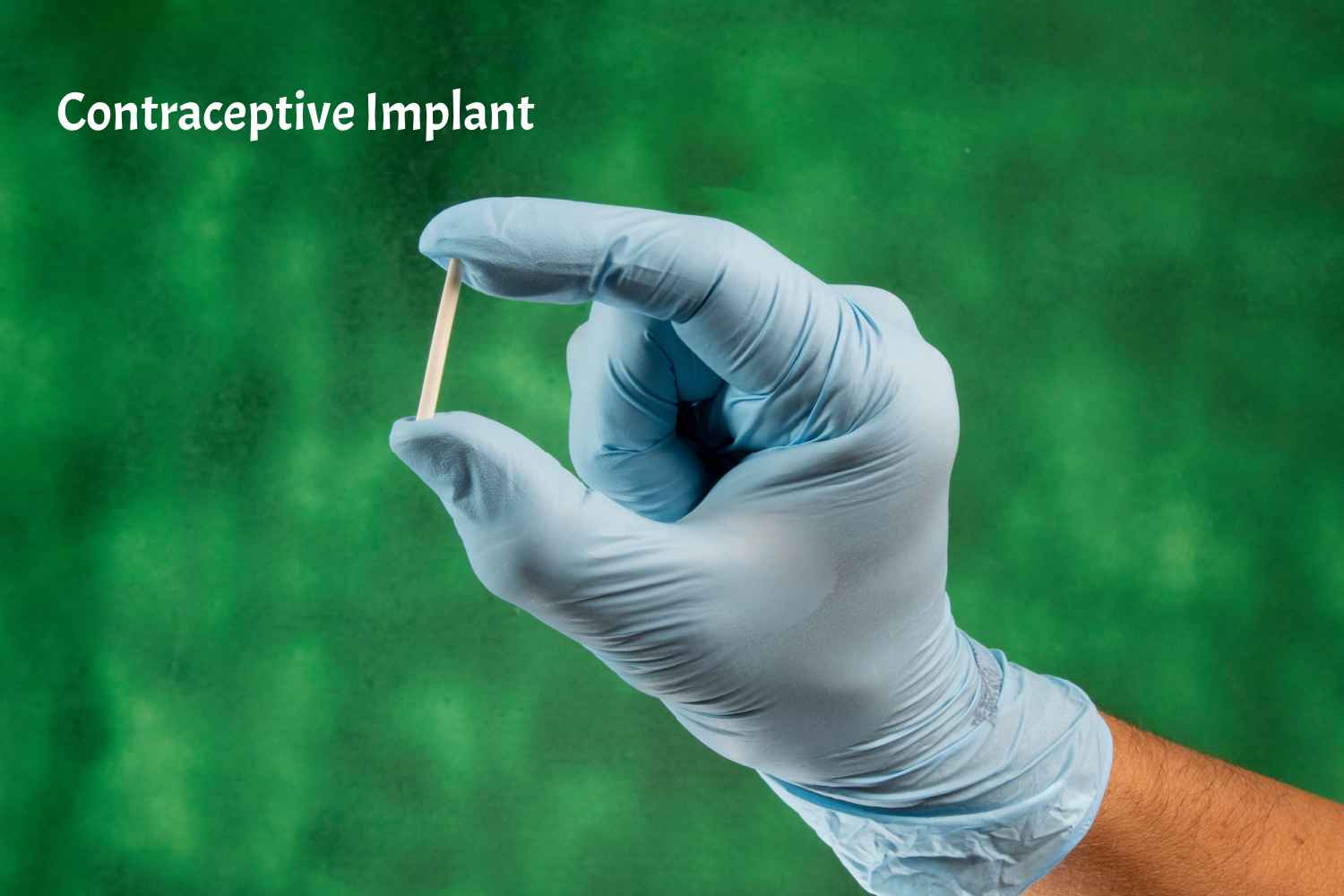
An implant is a thin, matchstick-sized plastic rod that is placed under the skin of the upper arm. This implant releases the hormone progestin which helps prevent pregnancy (4). It can prevent pregnancy for up to 3 years after insertion.
Implants are safe and effective contraceptives for women who can’t use contraceptives with estrogen. Women get can the implant removed once they plan to get pregnant. Also, in case of any side effects, these implants can be removed easily.
On the downside, some women may experience bruising and tenderness at the area of insertion. Irregular and light or heavy and long periods or complete absence of periods are some of the common side effects of contraceptive implants.
2. Hormonal Contraception

Hormonal contraception uses hormones to prevent or regulate ovulation and thus prevent pregnancy. These methods use estrogen and/or progestin as a form of birth control. Hormonal contraception includes different methods such as pills, injections. vaginal rings and patches. Broadly, hormonal contraception can be divided into two types.
2.1 Short Acting Hormonal Birth Control Methods
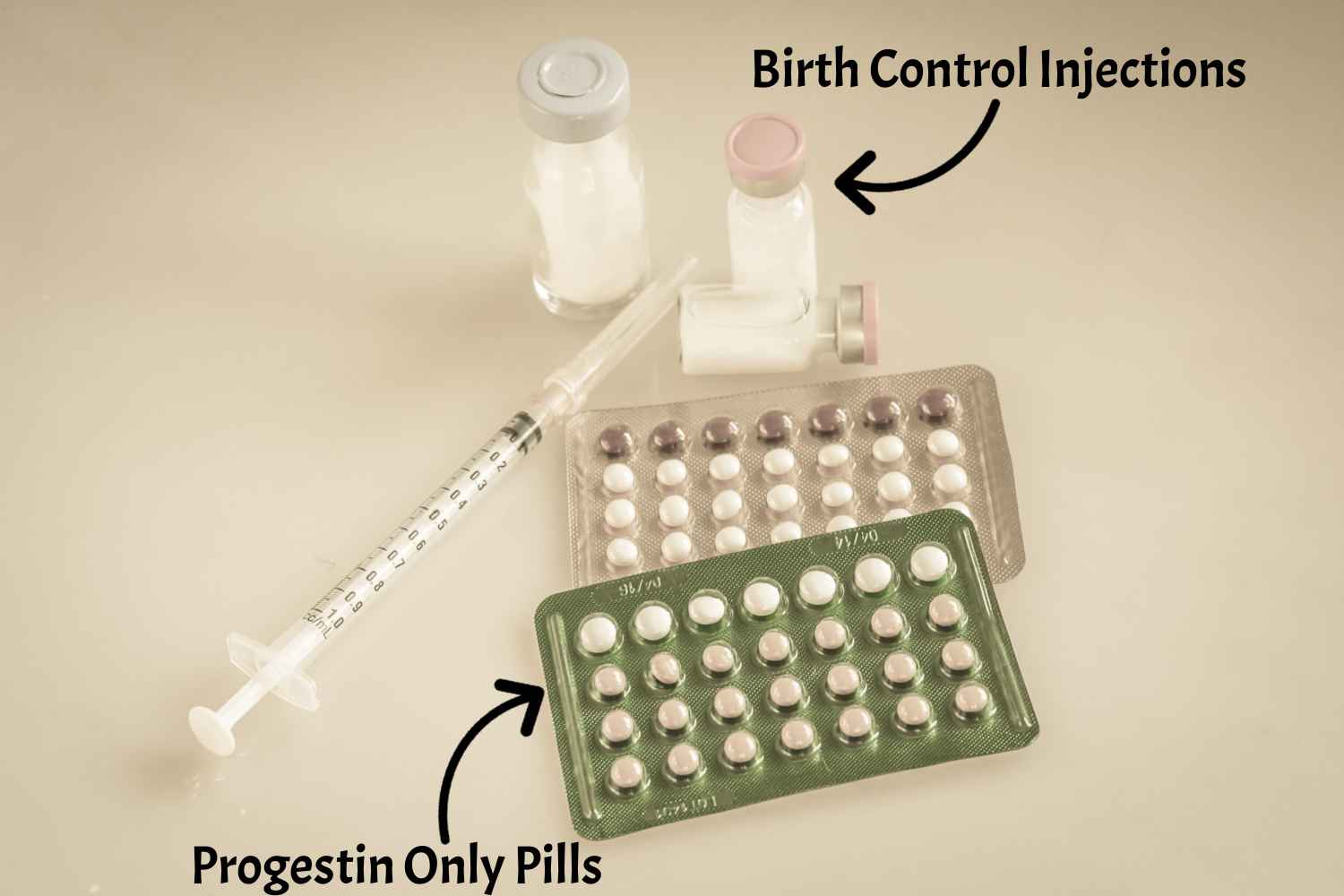
These methods use the help of hormones to prevent ovulation and thus, prevent pregnancy (5). Short acting hormonal methods are of two types
a) Birth Control Injections: Birth control shots such as the Depo Provera shot contain the hormone progestin. These shots prevent pregnancy by preventing ovulation. A standard birth control shot works for about 3 months which means that you must take 4 injections a year for birth control to be effective.
b) Progestin Only Pills: POP pills contain only one hormone, progestin, and do not have any estrogen. These pills come in 28-day packs only. All the 28 pills are “active” and to make them work effectively, it is imperative to take all the 28 pills in the pack every single day at the same time of the day.
2.2 Combined Hormonal Methods
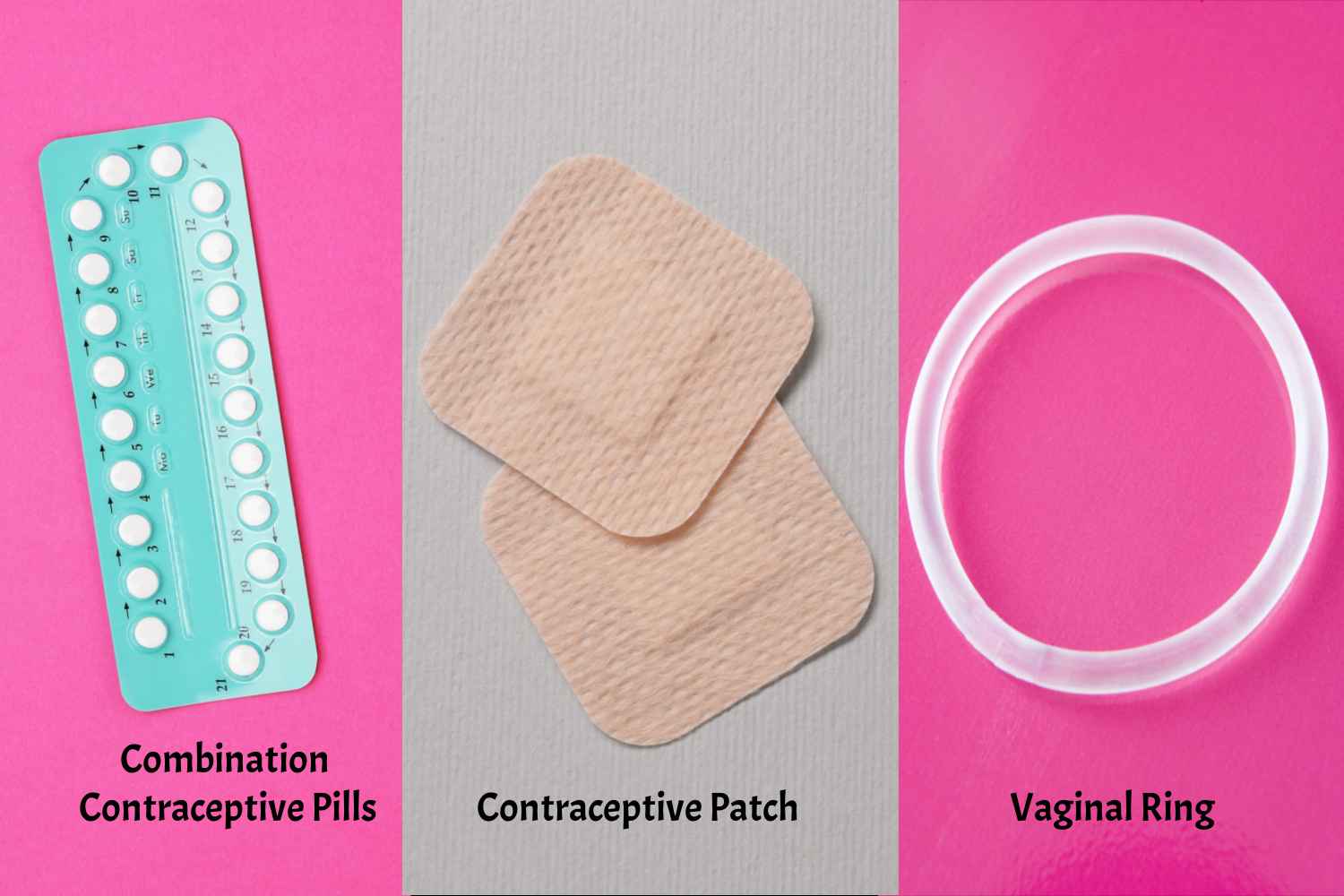
These methods use the hormones progestin and estrogen to prevent pregnancy by thickening cervical mucus and/or stopping ovulation from occurring. Combined
a) Combination Contraceptive Pills: These birth control pills are available in 28-day and 21-day packs. A woman is supposed to take from the first day of a period, and the first Sunday followed by the first day of the period respectively. Birth control pills are up to 99% effective provided are used correctly (6).
b) Contraceptive Patch: A contraceptive patch is a thin patch that sticks to the skin. It can be placed on the outer arm, upper body, buttocks, or abdomen and release hormones into the skin to prevent fertilization or ovulation.
c) Vaginal Ring: A vaginal ring is a stretchy, see-through, plastic ring placed in the vagina. Once placed it releases hormones for 3 weeks and should be removed on the fourth week. The vaginal ring should be changed every month.
[Read : Birth Control Pills]
3. Barrier Contraception
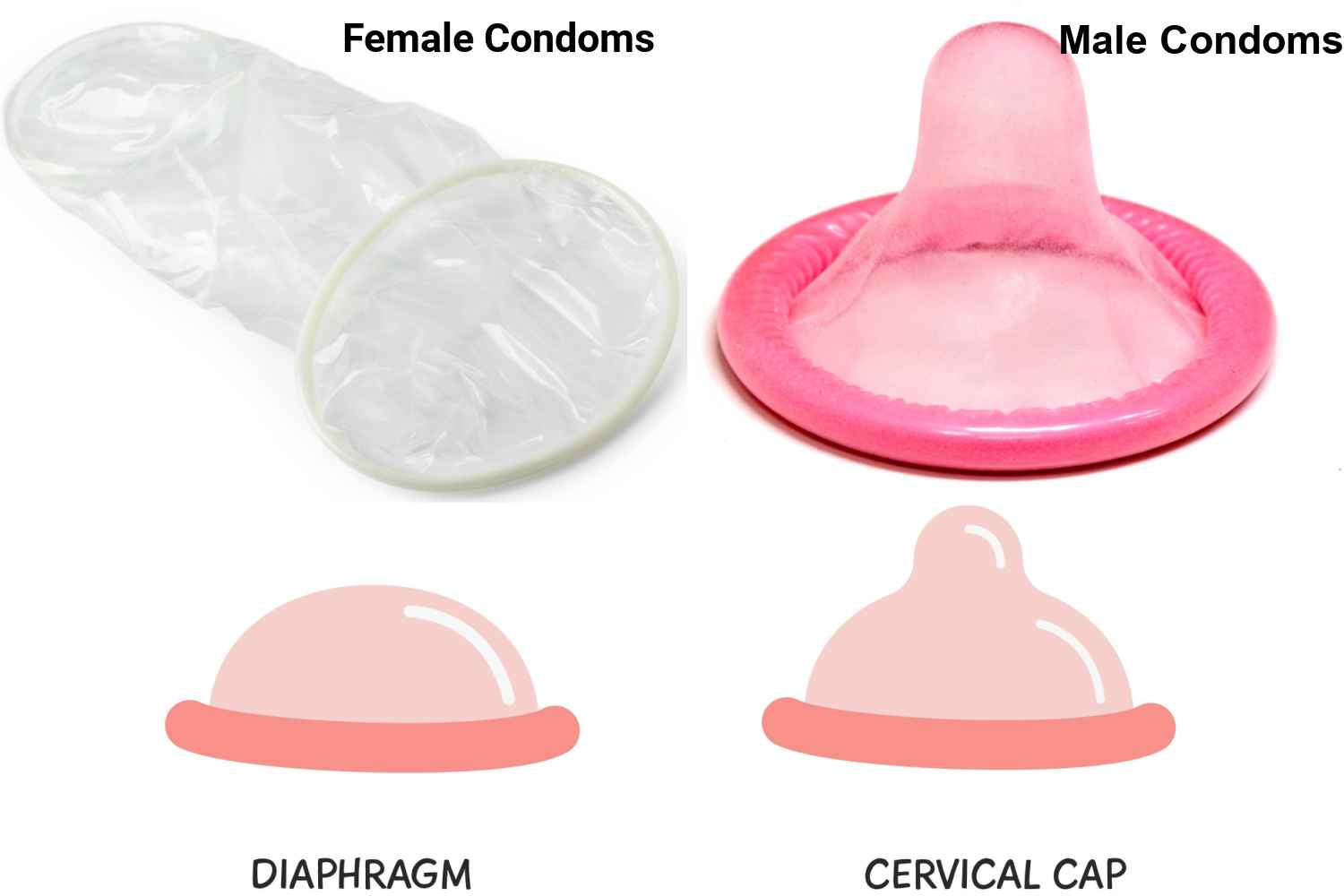
Barrier contraception methods block the sperm from getting into the vagina. This method is used only during sexual intercourse. Using spermicide along with the barrier method increases the results as spermicides destroy all the sperms that enter the vagina. These methods are the best option for women who can’t hormones for contraception
Barrier methods are of the following types
3.1 Male Condoms
A condom is a thin film casing made of latex or polyurethane that is placed over a man’s penis before sex. It acts as a barrier to stop sperm and infection from passing between sexual partners.
3.2 Female Condoms
A pouch is inserted into the vagina (more or less like a tampon) to prevent pregnancy. This decreases the chances of sperm coming in contact with the egg.
3.3 Diaphragms
A diaphragm (7) is a shallow cup made of silicone that is placed into the vagina before intercourse. It covers the cervix and keeps sperm out of the uterus. For a diaphragm to work effectively, it should be used with spermicide.
3.4 Cervical Cap
The cervical cap is a small device that is shaped like a bowl and it fits over the woman’s cervix and blocks the sperm from entering through the vagina. It has a strap that makes it easy to remove.
3.5 Spermicide
A spermicide is an agent that can kill sperm and is placed in the vagina before intercourse. It is available in different forms such as suppositories, creams, gels and creams. Spermicides may not be effective on their own and must be used in combination with other barrier methods for complete protection from pregnancy.
4. Emergency Contraception
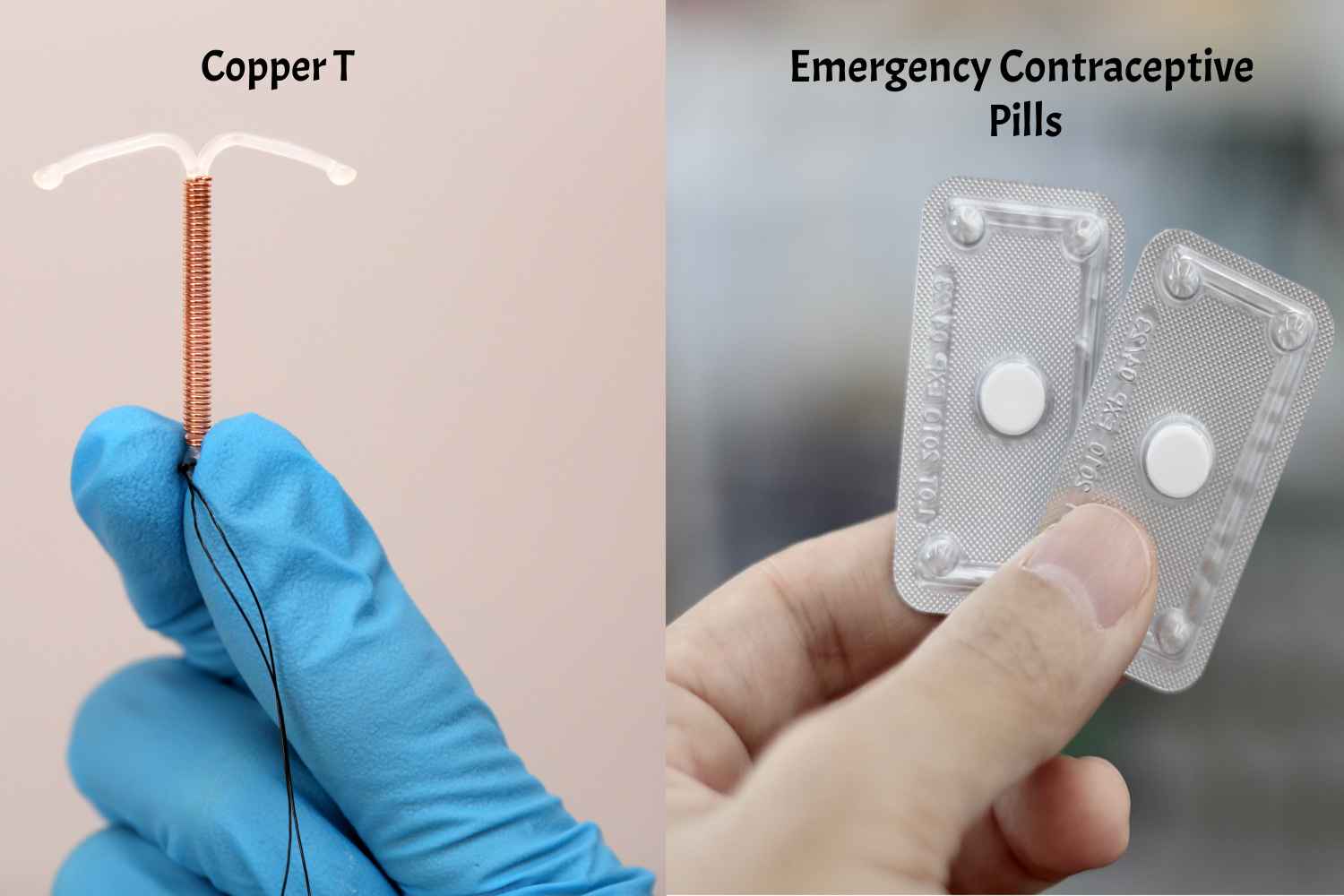
Emergency contraception can help prevent pregnancy if you think your contraceptive method failed, forget to take pills or shots on time. You can also take it if you were made to have sex against your will.
Emergency contraception is of two types.
4.1 Emergency Contraceptive Pills
Emergency contraception pills, also known as morning after, pills can be used right away or within five days after sex. These pills may contain levonorgestrel or ulipristal acetate. Emergency morning-after pills may not provide complete protection from pregnancy but are considered effective in preventing unplanned pregnancy in most cases (8). But remember, these pills cannot be used as a birth control method.
4.2 Copper T
Copper T, which is an intrauterine device used as a regular contraceptive method, can also be used as an emergency contraceptive (9). This effectively prevents pregnancy (the success rate is around 98%) up to five days after unprotected sex.
[Read : What Are The Side Effects Of Emergency Contraceptive Pills?]
5. Sterilization or Permanent Contraception
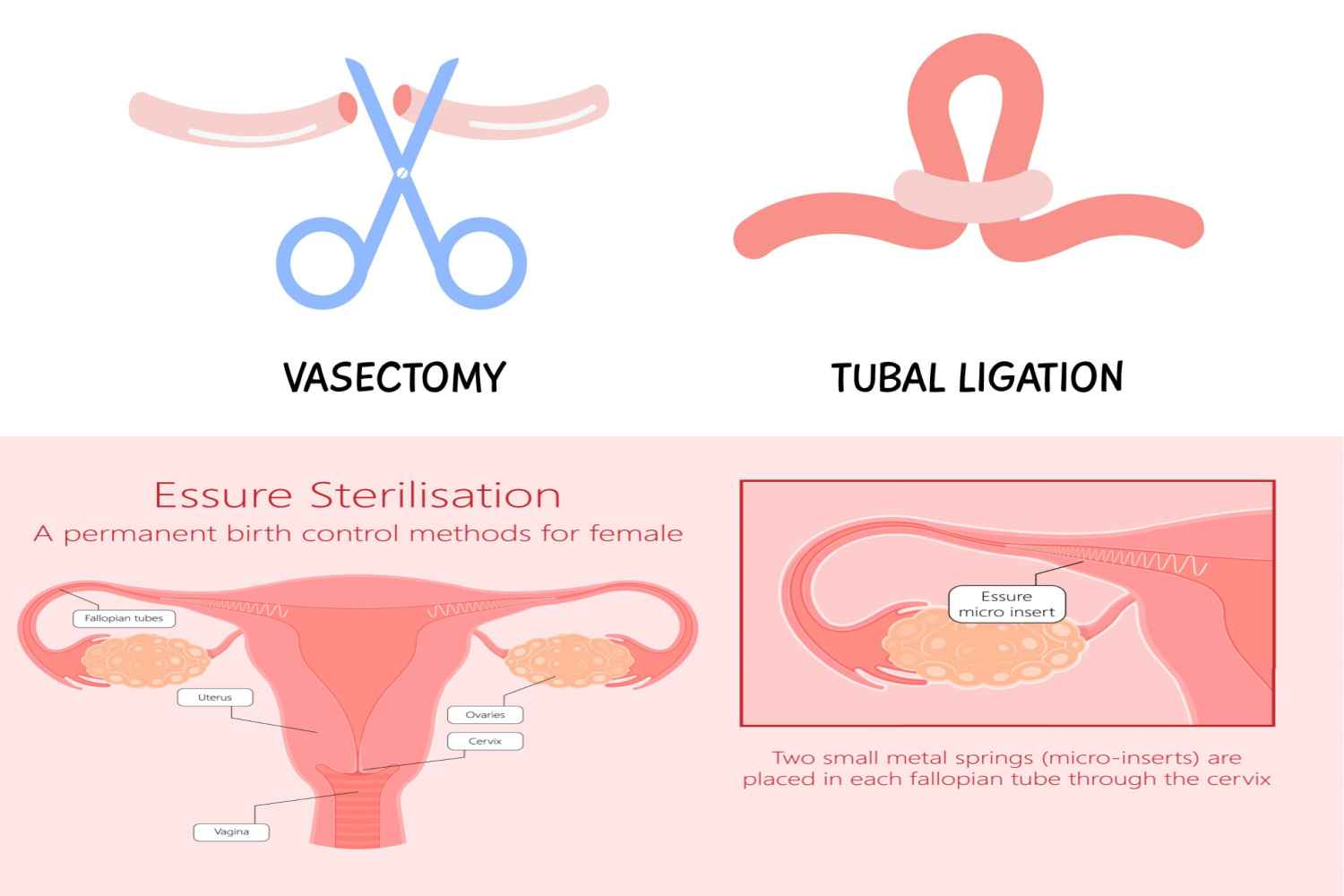
Permanent contraception or sterilization prevents pregnancy forever. Sterilization is possible for both men and women and is usually permanent. Sterilization is of the following types.
5.1 Tubal Ligation
Tubal Ligation is the sterilization procedure for women. This procedure involves blocking the fallopian tubes by tying or sealing them. This results in blocking the path between the ovaries and the uterus making pregnancy impossible.
5.2 Vasectomy
Vasectomy is the sterilization procedure for men and prevents the production of sperm. This procedure involves blocking the vas defers but cutting or closing it. As a result, the sperm cannot reach the urethra making it impossible for the sperm to reach the uterus during intercourse.
5.3 Sterilization Implant
This procedure is for women. It involves placing a soft, flexible implant into the fallopian tubes. After the completion of this procedure, it takes 3 months for scar tissue to form around the implant. This scar tissue results in the formation of a block in the fallopian tubes thus blocking the path between ovaries and the uterus.
Which is the Most Effective Form of Birth Control?

IUD is the most effective form of birth control. It has a 99% success rate. The IUD is one form of long-acting reversible birth control. In this procedure, a very small, often T-shaped rod, is inserted into the uterus by a doctor to prevent pregnancy.
IUD emits either the hormone progestin or copper (depending on the type of IUD), both of which are hostile to sperm. IUDs are one form of long-acting reversible birth control.
Factors to Consider When Choosing Contraception Methods
Choosing the right contraception method to suit you will depend on various factors. Creating a checklist of your goals and future plans will allow you to choose the contraceptive method that suits you the most.
- How old are you as a couple?
- Do you intend to have kids in the future?
- How quickly do you intend to have kids in the future?
- What is the health background of you and your partner/spouse?
- Do you have any allergies/underlying health conditions that may warrant choosing one contraception method over the other?
- Do you wish to use an insert-and-forget-it method or can you use something that you need to remember to use every day?
Once you have clarity on these pointers, you can choose a method that best suits you from the various options available.
There are various contraception methods you can choose from depending on your lifestyle choices, your routine, and what you feel the most comfortable with. In case of doubt, you can always consult with a medical practitioner or a gynecologist who will guide you to the right contraception method after considering various personal and health factors.
FAQ’s
1. Which is the Most Effective Contraceptive For Women?
IUDs or intrauterine devices and contraceptive pills can be considered the two most effective contraceptives for women. These are effective and most women find these methods easy to incorporate into their lives.
2. How to Decide Which Contraception is Good For Me?
The best contraceptive can be decided based on your age, whether you wish to have children in the future, which methods you find most convenient, and your body’s adaptability to that particular method. Your body’s acceptance of hormones may also play a role in the type of contraceptive to choose for yourself.
3. Are Permanent Contraceptive Methods Reversible?
No, permanent contraceptive methods have permanent results and are rarely reversible if at all. If you wish to have permanent contraception done, you must be doubly sure that you do not wish to have kids anymore.
4. Which is the Most Common Contraceptive Method For Men?
The most common contraception methods for men include condoms for temporary contraception and vasectomy for permanent sterilization (10).
5. Are There Any Side Effects to Using Contraceptive Methods?
Each type of contraception method may have its own side effects. For example, Intrauterine devices may result in side effects related to the menstrual cycle and pain and infection in the insertion area. Contraceptive pills may cause side effects such as nausea, bloating, discomfort, changes in the menstrual cycle patterns, etc. A proper understanding of the side effects may help you make a decision on which contraceptive method will best suit you.
References
- Contraception – StatPearls – NCBI Bookshelf (nih.gov) [https://www.ncbi.nlm.nih.gov/books/NBK536949/]
- Intrauterine Device – StatPearls – NCBI Bookshelf (nih.gov) [https://www.ncbi.nlm.nih.gov/books/NBK557403/]
- What we have learned from recent IUD studies: a researcher’s perspective – PubMed [https://pubmed.ncbi.nlm.nih.gov/8403915/ ]
- Safety and Benefits of Contraceptives Implants: A Systematic Review – PMC (nih.gov) [https://www.ncbi.nlm.nih.gov/pmc/articles/PMC8229462/]
- Contraception for Adolescents – PMC (nih.gov) [https://www.ncbi.nlm.nih.gov/pmc/articles/PMC7053440/]
- Oral Contraceptive Pills – StatPearls – NCBI Bookshelf (nih.gov) [https://www.ncbi.nlm.nih.gov/books/NBK430882/]
- Cervical cap versus diaphragm for contraception – Gallo, MF – 2002 | Cochrane Library [https://www.cochranelibrary.com/cdsr/doi/10.1002/14651858.CD003551/abstract]
- Emergency Contraceptive Pills: A Simple Proposal to Reduce Unintended Pregnancies on JSTOR [https://www.jstor.org/stable/2135857]
- Copper Intrauterine Device for Emergency Contraception: Clinical Practice Among Contraceptive Providers – PMC (nih.gov) [https://www.ncbi.nlm.nih.gov/pmc/articles/PMC3266549/]
- Male contraception – PMC (nih.gov) [https://www.ncbi.nlm.nih.gov/pmc/articles/PMC3510960/]
Read Also: Pregnancy After Stopping Birth Control Pills- Everything Your Need to Know
